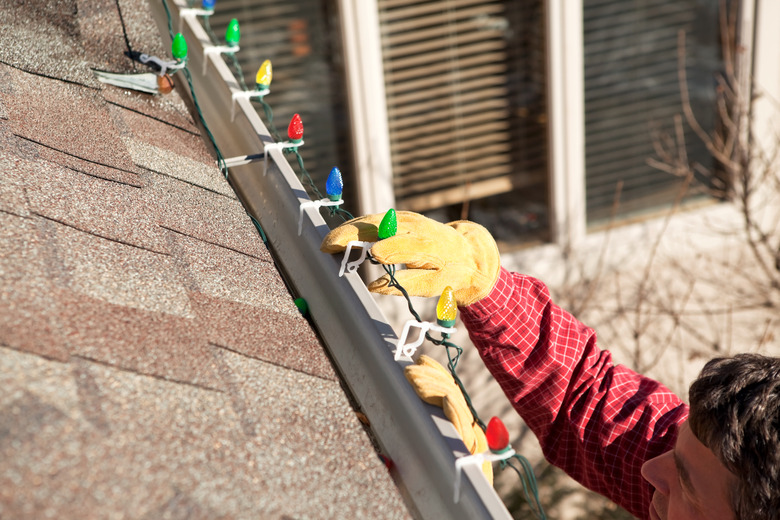How To Secure Christmas Decorations On A Roof
We may receive a commission on purchases made from links.
Christmas is a festival of lights, and plenty of people share in the spirit of the holiday season by hanging outdoor Christmas lights. Some are content to adorn trees in the yard, on the front porch, and maybe around some ground-floor windows, but other homeowners prefer to go the Clark Griswold route and put lights on the entire house — even the roof.
If you're of the latter persuasion, you should keep in mind that there are right ways to place lights and decorations on the roof, and there are wrong ways. The wrong ways can create dangerous conditions and roof damage. Don't forget that it's winter, and winter means snow, hail, and high winds.
How to Install Rooftop Decorations
How to Install Rooftop Decorations
The safest rooftop Christmas decorations are inflatable ones, but these need to be secured to prevent them from blowing away when the wind picks up. An easy hack to hold them in place is to use 50-pound sandbags. Even though sandbags are heavy, the weight is distributed evenly enough to prevent damage to the roof.
Another way to hold down your inflatable Santa or nativity scene is to secure it with ropes. Use at least two, and secure them to the eaves or soffits (the undersides of the eaves) on opposite sides of the roof. An even better idea is to secure the inflatable to a piece of plywood, set the plywood flat on the roof, and weight it down with sandbags or with ropes extending across the roof to the eaves.
The Best Ways to Attach Christmas Lights to the Roof
The Best Ways to Attach Christmas Lights to the Roof
It's best not to affix Christmas lights with nails or staples — but how are you supposed to make them stay on the roof? The answer is to use clips designed for this purpose. Shingle clips are designed to fit underneath shingles to hold string lights securely, and ridge clips have tabs that lock under ridge cap shingles to hold lights securely to the roof ridge.
Even if you use plastic clips, stringing decorative lights on the roof is a dodgy proposition. You can protect your roof and save yourself from a potentially serious fall by hanging lights only from the fascia (the horizontal component that holds the gutters in place) and eaves. You can do this by attaching light clips to the edges of the roof shingles. You can drive hooks or nails into wooden fascia, soffits, and corner trim, and you can use gutter hooks to hang lights from the gutters. Be careful not to overload the gutters; they're more fragile than they look.
Warning
Make sure you plug the lights (which should be rated for outdoor use) into a GFCI receptacle, preferably an outdoor one. Don't just feed the plug through an upstairs window and plug them into a non-GFCI bedroom outlet. Without ground-fault protection, damaged strings of lights could electrify a snowy roof.
Safety Tips for Rooftop Decorating
Safety Tips for Rooftop Decorating
If your roof has a steep pitch of more than 33 degrees, don't even think about installing lights and plastic Santas up there. It's just too dangerous to walk on a steep roof, especially in snowy weather, and it's even more dangerous to put things there that can fall. If the pitch is below this threshold and it's safe for you to walk on the roof, there are some other important cautions to observe:
- Don't use staples or nails to attach anything to the roofing material, especially lights. Both can cause leaks (and potentially water damage), and staples can puncture wiring and create electrical hazards.
- Don't put heavy things on the roof. They might fall off in high winds, and they put extra pressure on the roof deck, causing sags that can turn into ice dams.
- Don't put anything close to the chimney, especially if you use the fireplace in the winter. It's best to keep a 2- to 3-foot buffer between the chimney and lights and holiday decorations, as this could potentially be a fire hazard (almost all decorations are flammable).
- Don't work alone. You need someone else there in case something goes wrong, and a helper can pass supplies to you while you're on the roof, limiting the number of times you have to mount and dismount the ladder.
